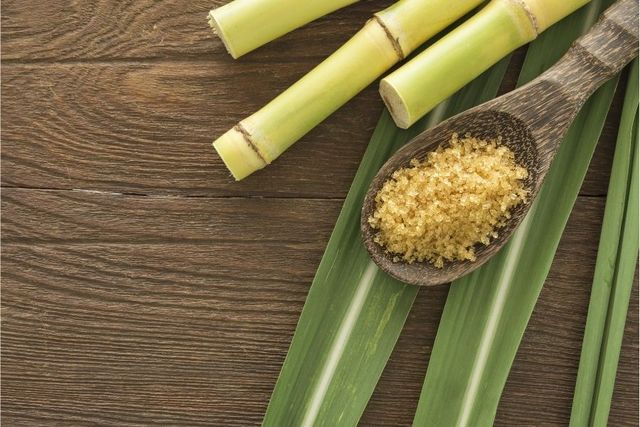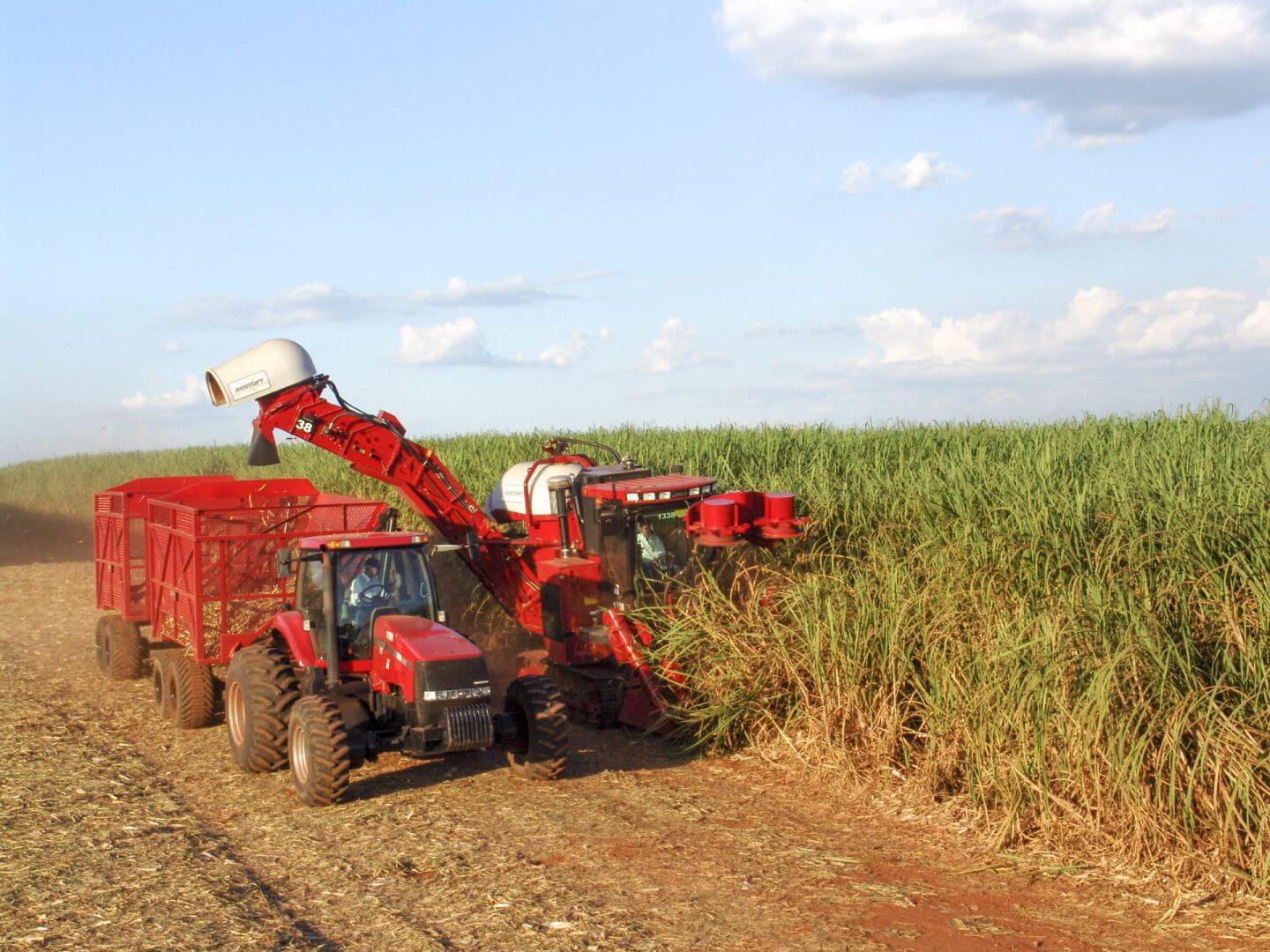Everything About Sugar Canes: What Are Sugar Canes Made Use Of For and Their Duty in Global Farming?
Sugar walking canes work as a keystone of worldwide agriculture, primarily acknowledged for their duty in sugar production. They additionally contribute to the creation of byproducts like molasses and ethanol. These aspects not only support numerous industries yet also effect financial stability in rural regions. The farming of sugar walking sticks faces considerable ecological challenges. Comprehending their multifaceted function motivates further exploration right into their farming techniques and sustainability initiatives.
The Agricultural Refine of Sugar Cane Farming
Although sugar cane cultivation might differ by area, the fundamental farming process stays regular. The very first step involves selecting high-yielding varieties suitable for neighborhood environments. Preparation of the dirt is important, commonly calling for husbandry and the addition of fertilizers to boost fertility. Growing typically takes place during the rainy period, with farmers utilizing either entire stalks or cuttings to develop brand-new crops.As the plants grow, they call for diligent care, including weed control, insect administration, and watering, depending on the ecological conditions. Farmers monitor the sugar walking cane's development cycle, which generally spans 10 to 24 months, prior to harvesting. Harvesting is labor-intensive, commonly performed manually or with specialized equipment, making sure minimal damages to the stalks. Complying with harvest, the cane is delivered to refining centers. This thorough farming procedure not just supports regional economic situations however likewise plays a considerable role in global farming techniques, adding to food and energy products.
Sugar Manufacturing: From Cane to Crystal
The trip of sugar manufacturing starts the moment fresh harvested sugar cane gets to refining facilities. The primary step includes cleaning and chopping the cane to prepare it for extraction. Utilizing high-pressure rollers, the juice is drawn out from the smashed walking cane, causing a pleasant liquid called sugarcane juice. This juice undertakes information, where contaminations are removed with the addition of lime and heat.Next, the made clear juice is focused by boiling it to produce a thick syrup. This syrup is then taken shape by cooling, making it possible for sugar crystals to create. The taken shape sugar is divided from the remaining syrup, called molasses, through centrifugation.Finally, the sugar crystals are cleaned and dried, resulting in the familiar granulated sugar (What Are Sugar Canes Used For). This process transforms raw sugar cane right into a product that is indispensable to different culinary and industrial applications, highlighting the relevance of sugar in worldwide agriculture
Biofuels and Sugar Canes: A Lasting Future
As the globe significantly looks for sustainable power options, sugar walking sticks have emerged as a promising resource for biofuels. The biomass acquired from sugar walking sticks can be transformed right into ethanol, an eco-friendly fuel choice that considerably lowers greenhouse gas exhausts contrasted to fossil fuels. This procedure not only supplies a cleaner power resource yet also promotes energy independence for many countries.In enhancement, sugar walking cane growing supports country economies by developing tasks in both farming and biofuel production industries. Making use of sugar walking canes for biofuel manufacturing likewise encourages agricultural diversity, which can improve soil health and lower dependence on solitary crops. Additionally, the spin-offs of sugar walking stick handling can be utilized for power generation, additionally contributing to a lasting power cycle. As nations undertaking to fulfill renewable energy targets, sugar walking canes are poised to play a crucial function fit a much more lasting future in the biofuel landscape.

The Duty of Sugar Canes in Beverage Manufacturing
Sugar walking sticks play a substantial role in beverage production, functioning as a primary ingredient in rum and adding to the sweet taste of several soft drinks. In addition, their natural juices are used in various drinks, improving taste and appeal. This versatility underscores the relevance of sugar canes in the global beverage market.
Sugar Walking Stick in Rum
Rum production is delicately connected to the growing of sugar walking cane, an essential plant that offers the needed fermentable sugars required for fermentation. This process starts with the extraction of juice from gathered sugar canes, which is then either fermented straight or processed into molasses. Yeast is included in convert the sugars into alcohol, resulting in a varied variety of rum styles, from light to dark selections. The geographical area where the sugar walking stick is expanded significantly influences the taste profile of the rum, with factors such as dirt type and environment playing essential functions. Countries like Barbados, Jamaica, and Cuba are renowned for their rum production, showing the historical and cultural significance of sugar walking stick within the international beverage sector.
Soft Drinks Sugar Source

All-natural Juice Manufacturing Utilizes
Along with its significant function in soda production, sugar walking cane is also crucial in the all-natural juice market. The juice removed from sugar walking stick, referred to as walking cane juice, is commemorated for its natural sweetness and one-of-a-kind flavor account. This juice is frequently taken in fresh in various regions, specifically in tropical countries, where it is taken pleasure in as a rejuvenating beverage. In addition, cane juice works as a base component in an array of all-natural fruit juices and healthy smoothies, boosting both preference and dietary worth. Its all-natural buildings make it an eye-catching alternative to artificial sugar, attracting health-conscious customers. Overall, sugar walking stick's flexibility in juice manufacturing emphasizes its significance in contemporary beverage offerings worldwide.
Technologies in Sugar Cane Byproducts
Innovations in sugar walking cane results are paving the method for sustainable remedies in numerous markets. Biofuels originated from sugar walking cane provide an alternate energy resource, while advancements in lasting product packaging are minimizing dependence on standard products. These developments highlight the versatility and potential of sugar cane past its main usage in drink manufacturing.
Biofuels From Sugar Cane
Exactly how can the byproducts of sugar cane contribute to sustainable energy remedies? The conversion of sugar walking stick into biofuels presents an appealing opportunity for eco-friendly energy. By utilizing the fibrous deposit, called bagasse, producers can produce bioethanol via fermentation procedures. This bioethanol can work as a lasting choice to fossil gas, lowering greenhouse gas discharges and reliance on non-renewable sources. In addition, molasses, another byproduct, can be fermented to create biofuels, maximizing source performance. The energy generated from sugar walking cane not only provides a cleaner fuel source however also enhances the total financial practicality of sugar production. By integrating biofuel manufacturing right into their operations, sugar walking stick markets can play a crucial duty beforehand sustainable power options globally.
Lasting Packaging Solutions
Lasting packaging services are increasingly being established from sugar cane byproducts, showcasing the flexibility of this agricultural staple. Technologies such as eco-friendly plastics acquired from bagasse, the coarse residue left after juice removal, are gaining grip. These products offer an environmentally friendly alternative to traditional plastics, decreasing reliance on nonrenewable fuel sources and reducing carbon impacts. Furthermore, sugar cane-based packaging is compostable, breaking down naturally without hurting the atmosphere. Companies are currently checking out these options to straighten with consumer demand for sustainability. As understanding of plastic air pollution expands, the adoption of sugar cane-derived product packaging is anticipated to rise, placing sugar walking sticks as an essential gamer in the shift to greener packaging services in different industries.
Economic Effect of Sugar Cane Farming

Although sugar walking stick farming has deep origins in numerous economies, its financial influence expands go to this web-site far past farming manufacturing. This plant works as a considerable resource of revenue for countless farmers worldwide, particularly in creating countries where agriculture is a key income. Sugar cane adds to regional economic situations with job production in growing, harvesting, and handling. The market also promotes development in related markets such as transport, devices manufacturing, and food processing.Furthermore, sugar walking cane is a principal in international trade, affecting international markets and costs. Countries that produce sugar cane commonly depend on exports to improve their financial stability. The byproducts of sugar walking cane, such as ethanol and molasses, diversify profits streams for farmers and add value to the farming industry. Overall, the economic implications of sugar walking stick farming are extensive, affecting not just farmers however also nationwide economic climates and entire neighborhoods.
Environmental Factors To Consider in Sugar Cane Farming
While sugar walking cane farming plays an important function in many economic situations, it also elevates considerable environmental issues that can not be ignored. The extensive usage of fertilizers and pesticides in sugar walking cane cultivation usually leads to soil deterioration and water air pollution. Drainage from these chemicals can contaminate nearby water bodies, harming aquatic ecosystems. Additionally, the monoculture techniques widespread in sugar walking stick farming decrease biodiversity, making communities extra prone to insects and diseases.Deforestation is one more important problem, as land is usually cleared to make way for sugar plantations, bring about habitat loss for wildlife and raised carbon emissions. Additionally, the high water consumption needed for sugar walking cane watering can stress local water sources, particularly in deserts. As worldwide need for sugar remains to increase, addressing these ecological challenges ends up being important to guarantee sustainable methods in sugar cane cultivation.
Frequently Asked Concerns
What Are the Nutritional Conveniences of Sugar Cane?
The nutritional benefits of sugar walking cane mostly include its high carbohydrate content, offering energy. Furthermore, it has vitamins, minerals, and anti-oxidants that might sustain general health and wellness, though moderation is important as a result of its sugar material.
Exactly How Does Sugar Walking Stick Affect Resident Ecosystems?
Sugar walking stick growing can considerably affect regional communities by modifying land usage, impacting biodiversity, and calling for considerable water sources. Furthermore, it may lead to dirt destruction and chemical drainage, interfering with surrounding environments and wildlife populaces.
What Is the History of Sugar Cane Farming?

Are There Alternatives to Sugar Walking Stick for Sugar Production?
Alternatives to sugar walking cane for sugar manufacturing consist of sugar beets, corn, and various exotic plants like sorghum and agave (What Are Sugar Canes Used For). These crops provide varied resources of sweet taste, each with unique farming demands and ecological effects
How Do Weather Condition Patterns Impact Sugar Walking Stick Yields?
Weather condition patterns greatly influence sugar walking cane yields with temperature level fluctuations, rains amounts, and seasonal cycles. Drought or extreme rains can prevent growth, while ideal conditions boost photosynthesis, inevitably influencing the amount and quality of the harvest. The trip of sugar production starts the minute newly collected sugar walking stick gets here at processing facilities. The crystallized sugar is separated from the remaining syrup, understood as molasses, through centrifugation.Finally, the sugar crystals are cleaned and dried, resulting in the acquainted granulated sugar. Rum manufacturing is delicately connected to view it now the growing of sugar walking cane, an important plant that offers the necessary fermentable sugars needed for fermentation. In addition, the monoculture practices common in sugar cane farming reduce biodiversity, making ecological communities much more vulnerable to bugs and diseases.Deforestation is one more important concern, as land is often gotten rid of to make way for sugar ranches, leading to environment loss for wild animals and boosted carbon discharges. Alternatives to sugar walking stick for sugar production include sugar beetroots, corn, and numerous tropical plants like sorghum and agave.